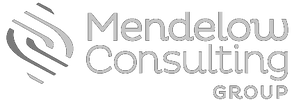 Also: What to do if you too often hit snooze on problem-solving, strategic planning, and other ‘important’ work—because of ‘urgent’ work There are few things that coaches and facilitators (two ‘hats’ I wear throughout the workweek) love more than questions. Questions are the sharpest tool in our toolboxes—razor sharp, because we are always honing them. We know that how you frame a question impacts how the brain receives it. You can imagine my delight when, at book club this month, Laurie Shellenberger shared a new question set from the book Upstream by Dan Heath. In the book, Heath introduces the concept of “upstream thinking,” which is a way to look at the source or drivers for a problem, rather than the consequences of it. It’s a structure to consider complex and costly problems (e.g., Medicare spends a fortune on hospital visits that could be prevented). As you look at your most important strategic issues, consider Heath’s questions.
Questions for Upstream Thinkers Problem-solving questions from Upstream by Dan Heath 1. How will you unite the right people? 2. How will you change the system? 3. Where can you find a point of leverage? 4. How will you get early warning of the problem? 5. How will you know you’re succeeding? 6. How will you avoid doing harm? 7. Who will pay for what does not happen? How to Make Time to Look Upstream – Separating the ‘Urgent’ from the ‘Important’ As much as I love Heath's questions, I realize it’s only half of the plan. It’s one thing to have a great set of questions. It’s entirely another to carve out space and time for the ‘Upstream’ conversation. In other words, if you really want change to happen, you have to invest in time for strategic conversations. This is where I see many of my clients suffer. Plan as we may, there’s always something unexpected that creeps up. It can be a challenge to handle urgent needs and carve out time for strategic, long-term priorities. I get it! The most effective leaders plan for both the urgent and important tasks (both planned and unexpected). Here are three simple steps to help you get started in managing this tension so you can make real change happen. Step 1: Audit From a workload perspective, survey yourself and see how you are spending your time. This may be a quick calendar audit exercise. As you look at the months ahead, ideally you have a healthy mix of items including:
Step 2: Analyze As you look at how you’re spending your time, ask yourself, “Does each item have a purpose?” Gain clarity on the purpose and value of everything on your calendar. If not, what can be done? You want to get to a place where you make time for an offsite or strategic planning session and have peace of mind that you’re handing the “urgent” items in daily huddles, etc. Relentlessly edit your calendar to make this happen. Step 3: Act Aside from the 'edits' mentioned above, taking action could look like this:
At Work and Beyond Yes, please try this at home! This approach works at work and beyond. If you were to map your personal and family time to the purpose and value, what would you find? Ask yourself:
You know the steps! Walk through them. Pro tip: You might not want to call your family members ‘stakeholders,’ but you can do a verbal dance around that. Let me know how you’re doing managing the ‘urgent,’ and how these tips help. As always, keep the feedback coming!
0 Comments
Your comment will be posted after it is approved.
Leave a Reply. |
AuthorLaura Mendelow |
|
|
©2020. All Rights Reserved. Mendelow Consulting Group, LLC.

